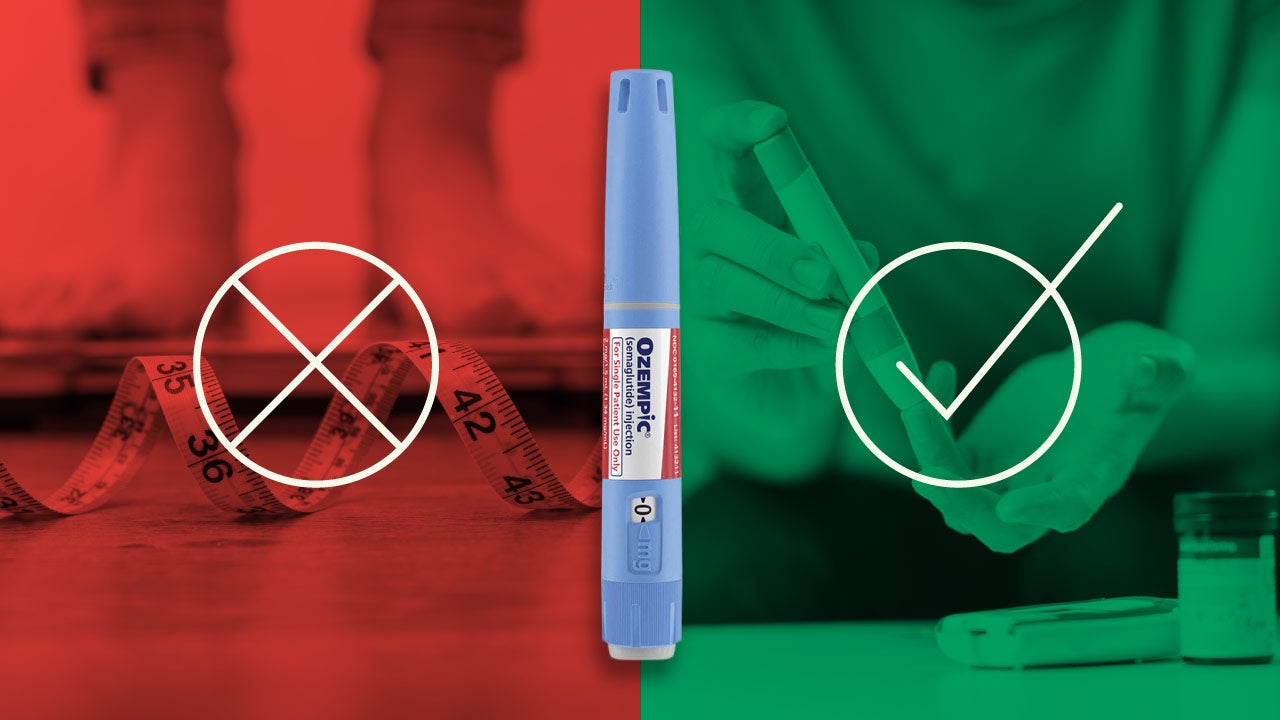Ozempic, an FDA-approved medication originally developed to treat type 2 diabetes, is making waves among consumers for its rapid weight loss results. Before Ozempic’s mass media exposure in late 2022, the drugs’ slimming side effects weren’t well known by consumers until social media turned the diabetes management medication into a weight loss sensation. While many are reaping the weight loss benefits of off-label Ozempic prescriptions, it’s proved to be problematic for those who use the drug to manage diabetes. The sudden increase in demand has contributed to nationwide shortages, and patients with diabetes are paying the price as the drug becomes increasingly popular for superficial purposes.
What is off-label prescribing?
Just because you are prescribed a medication, that doesn’t mean it’s serving its intended purpose. Off-label prescribing occurs when a healthcare provider prescribes an FDA-approved medication to treat a disease or medical condition not included in the FDA approval. It isn’t uncommon for a medication to be used off-label, as there are no laws saying that a provider can’t prescribe that way. In fact, more than one in five outpatient prescriptions written in the U.S. are for off-label therapies.
Using Ozempic, a diabetes management drug, for weight loss is an example of off-label prescribing, as it is only approved for type 2 diabetes management. Most of the time, Ozempic will be a covered medication under the pharmacy benefit, but if a plan sponsor doesn’t have any kind of utilization management in place, any of their members could get Ozempic, whether it be for type 2 diabetes or weight loss.
What does this mean for patients with diabetes?
Since the drug went viral, retail pharmacies have had difficulty keeping Ozempic on their shelves as people flock to physicians looking for off-label prescriptions in hopes of achieving the fast weight loss results seen on social media. One might assume that those with type 2 diabetes would be first in line to receive a prescription, but unfortunately, that isn’t the case. When a dispensing pharmacy fills a prescription for Ozempic, they can’t discriminate and filter who wants the drug for weight loss and who needs it for diabetes management.
As a result, many type 2 diabetes patients are forced to either switch to alternate medications or decrease the amount they’re taking to help prolong their prescription. Switching medications and changing regimens has its side effects, may not be controlled well when rationing their treatments, and patients need time to establish themselves on a new medication to see the benefits. If someone with diabetes is on Ozempic for one month and then switches to a new drug the next, their body won’t have time to adjust to the medications, and their blood sugar isn’t going to be well-controlled. As a result, their blood sugar could potentially lower or bottom out, putting them at an increased risk of being hospitalized.
How to combat off-label prescribing
One way plan sponsors can combat off-label prescribing is by having the right utilization management in place that aligns with their company goals. If off-label prescribing is an area where they want to limit their exposure, having the proper utilization management programs in place – like prior authorization, quantity limits, and step therapy – can help prevent members from getting drugs like Ozempic for off-label use, so plan sponsors are only paying for the medication when it’s being used for an FDA-approved indication.
The bottom line
Patients need protection from risky and ineffective medications, especially those making their way as trends on social media platforms. With a diligent approach to oversight from an expert clinical team, fine-tuning off-label prescribing and promoting would be in the best interests of patients. More employer plans without strong clinical oversight in place will see the impact of off-label prescribing of type 2 diabetes treatments in 2023. With the pharmacy benefits industry being complex, it is important that plan sponsors look for an independent clinical management solution that reduces the medical risk for members and eliminates wasteful spending.






